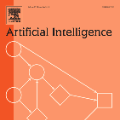
The rapid advancement of large models, driven by their exceptional abilities in learning and generalization through large-scale pre-training, has reshaped the landscape of Artificial Intelligence (AI). These models are now foundational to a wide range of applications, including conversational AI, recommendation systems, autonomous driving, content generation, medical diagnostics, and scientific discovery. However, their widespread deployment also exposes them to significant safety risks, raising concerns about robustness, reliability, and ethical implications. This survey provides a systematic review of current safety research on large models, covering Vision Foundation Models (VFMs), Large Language Models (LLMs), Vision-Language Pre-training (VLP) models, Vision-Language Models (VLMs), Diffusion Models (DMs), and large-model-based Agents. Our contributions are summarized as follows: (1) We present a comprehensive taxonomy of safety threats to these models, including adversarial attacks, data poisoning, backdoor attacks, jailbreak and prompt injection attacks, energy-latency attacks, data and model extraction attacks, and emerging agent-specific threats. (2) We review defense strategies proposed for each type of attacks if available and summarize the commonly used datasets and benchmarks for safety research. (3) Building on this, we identify and discuss the open challenges in large model safety, emphasizing the need for comprehensive safety evaluations, scalable and effective defense mechanisms, and sustainable data practices. More importantly, we highlight the necessity of collective efforts from the research community and international collaboration. Our work can serve as a useful reference for researchers and practitioners, fostering the ongoing development of comprehensive defense systems and platforms to safeguard AI models.
翻译:暂无翻译


